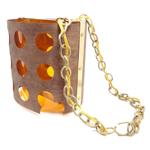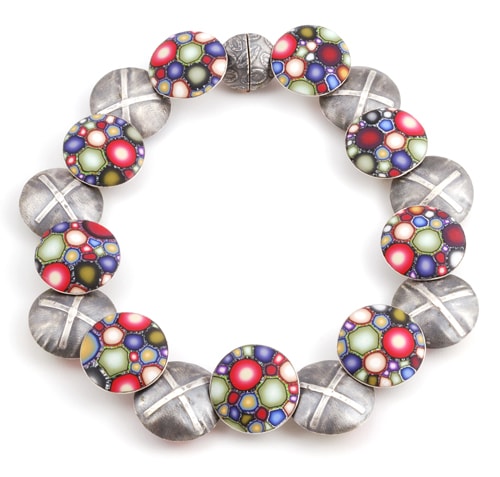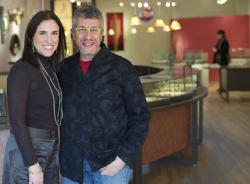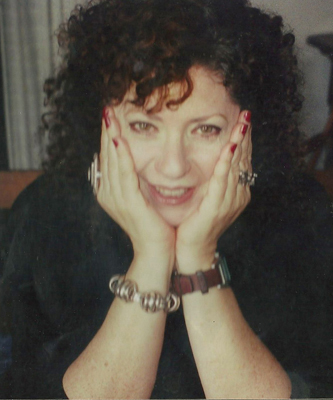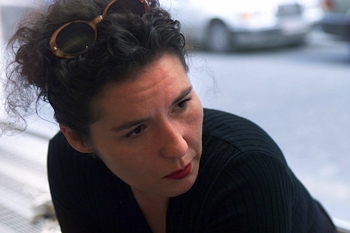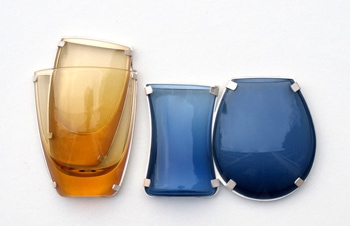Galerie Pont & Plas, located in Ghent, Belgium, is housed in a beautiful old eighteenth century house. Nicole Thienpont founded the gallery in 2002 and shows a variety of artwork, including jewelry. She says she was inspired by the words of Dr Adriaan Claerhout, ‘Is there a purer, more honest meeting point imaginable between cultures and people than art?’ Her show with jeweler Gesine Hackenberg opened on a drizzly night in early March 2012 and will continue through April. I was curious about Hackenberg’s work and her decision to use contemporary glassware imagery.
Susan Cummins: Can you describe your background as a jeweler?
Gesine Hackenberg: I was born in 1972 in Germany but now I live and work in Amsterdam. I was trained as a goldsmith at the Fachhochschule für Gestaltung in Pforzheim, Germany and in 2001 I received my degree from the Gerrit Rietveld Academie in Amsterdam. I am currently a Visiting Professor at the MAD-faculty in Hasselt, Belgium and at the VakschoolEdelsmeden in Amsterdam.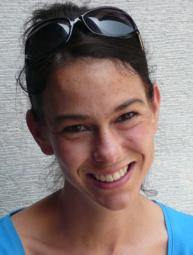
Was there a particular teacher or artist that influenced you?
I guess Iris Eichenberg, who was one of my teachers at the Gerrit Rietveld Academie, has influenced me most in my way of working and looking at materials. Though I believe that also my background as a goldsmith in Germany has always stayed with me.
How would you describe your work in general?
A basic theme in my work is placing ordinary objects of use in the perspective of jewelry. I reflect their emotional value and possible position on the body. The pieces are based on craft techniques and various materials that tell their own stories about preciousness and adornment, like ceramic tableware, (precious) metal, Japanese Urushi lacquer and glassware. They refer to the validity of traditional themes and their heritage. In the same time, they merge concepts like jewelry, ornaments and objects of use.
